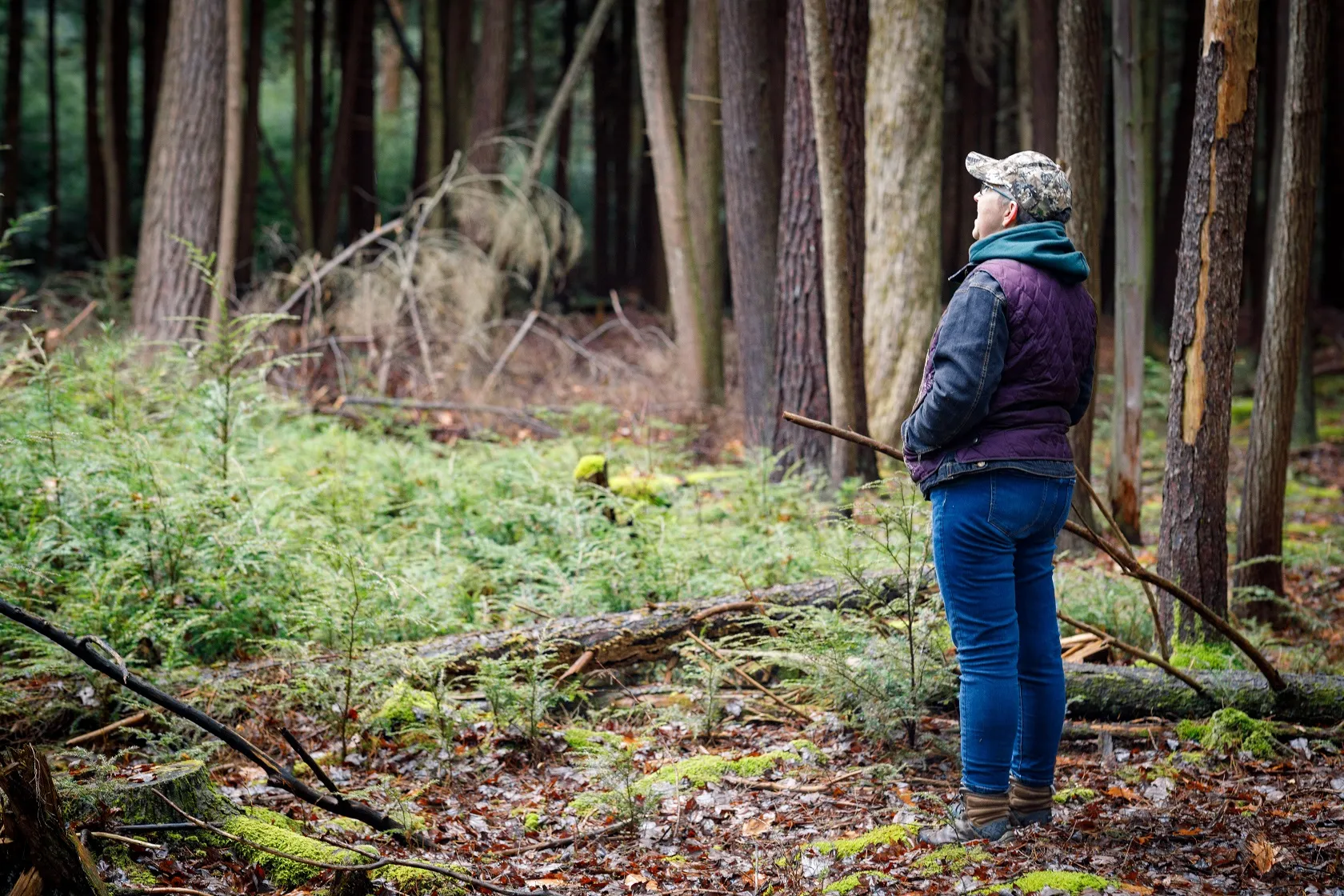FEATURE: Keep on Moving – Dynamic Baselines Seen Driving Accuracy in Forest Carbon Accounting

This passage was originally published in Carbon Pulse:
In the context of accusations of widespread over-crediting in the voluntary carbon market (VCM), one emergent accounting approach could tackle some of the challenges with auditing of forestry projects, offering real-time and dynamic monitoring of climate impact via remote sensing technologies.
Multiple media outlets have levelled claims over the past year that a large proportion of historical carbon credit issuances in the VCM has been based on limited or no evidence of additional or durable emissions reductions or removals, citing widespread fraudulent or careless practice. Such claims have been vehemently repudiated by many market participants.
With forestry projects taking the brunt of the criticism, nature-based credit prices crashed from early 2022 highs. This has occurred as buyers have shunned certain types of credits fearing reputational risk, with many awaiting final integrity guidelines this year as well as greater clarity on the formation of Article 6 credits under the UN-level process.
One potential solution is gathering pace in light of the VCM integrity debate, proposing a new approach to carbon accounting by deploying technological advancements, purporting to monitor climate impacts in real-time based on direct observations of activities such as improved forest management or reforestation.
The so-called ‘dynamic baseline’ accounting approach monitors an area of forest which has been protected or restored and calculates the impact of the activity relative to a similar ‘control area’ with similar characteristics, with the comparison done on a frequent basis.
By measuring the differences between the protected and unprotected forests over a defined period, such as one year, the methodology then enables the issuance of credits based on the carbon project’s impact. The real-time measurement is usually either done by on-the-ground monitoring, or increasingly by remote sensing and satellite technologies.
This compares with the current approach most used across the VCM: a static, or projected baseline. This method projects the impact of an activity based on a model built on several assumptions grounded in historical data, and with the crediting period fixed over a much longer timeframe, such as 10 years.
Dynamic Benefits:
Proponents of the dynamic approach state that measuring forestry carbon projects over shorter periods substantially lowers the likelihood of over-crediting, such as wildfires or a significant change in government policy towards a forest, according to Samuel Gill, co-founder and president at carbon ratings agency Sylvera.
“In our project assessments, we’ve seen that the first few years of baselines can often be more accurate but often the longer the baseline period is in place it starts to diverge from observable deforestation risk,” he told Carbon Pulse.
“For example, if you made a baseline calculation for a rainforest in Brazil five years before [Jair] Bolsanaro came to power, your baseline would misrepresent the risk to the forest after his election – after which deforestation patterns changed very significantly.”
Another benefit of the dynamic approach is that if political developments or a negative natural event does change the landscape in the project area during the crediting period, it will likely also do so in the control area, assuming the two have been properly matched. This should also help to mitigate the risk of dramatic alterations to the natural landscape leading to over-issuance at scale.
As a result of these core benefits, dynamic baselines could go some way to cleaning up the reputation of forestry projects in light of media sources’ reporting of historical over-crediting, according to Ethan Belair, natural climate solutions forester at NGO The Nature Conservancy, who noted that the measurement overall was significantly more accurate as a measure of mitigation.
He suggested that the new method also makes a lot more sense to those participating in the VCM, as well as those looking to engage, due to the concept’s relative intelligibility when compared to “arcane” models that can be “difficult for a lot of people to wrap their heads around”.
“Just in terms of the PR for the VCM writ large, dynamic baselines increase the credibility and intuitiveness of credit yields,” he said.
In a sense, dynamic baselines offer stakeholders a somewhat tangible outcome which can even help to get sceptics to buy into the idea of crediting outcomes.
“You have area A that’s in the project, and area B that isn’t in the project. We impose a treatment [on area A], and then we watch what happens,” Belair explained when underlining the simplicity of the concept.
“That makes sense to a lot of people; that’s something they can grasp.”
In the context of the reputational crisis facing certain nature-based project types and methodologies in the VCM, deploying an easy-to-understand approach would help crucially to raise the “social capital” of such activities, Belair added.
Building Momentum:
Momentum is building behind the accounting method, despite it very much still being in its nascency in terms of rollout.
Belair and TNC have worked on a new methodology for improved forestry management, which was approved last year by carbon standard Verra.
The methodology, VM0045, was developed in partnership with the American Forest Foundation and the Family Forest Carbon Program, and is just being deployed now across some US-based projects.
There is already interest from abroad, and discussions are happening to try and move it across borders, Belair confirmed to Carbon Pulse.
“I have heard there are groups in Spain, Guatemala, and Mexico that are trying to find data sources and figure out the details of how the methodology can work in those locations,” he said.
Verra, the largest VCM registry by volume, is exploring the accounting method for potential use across some of its other methodologies.
“The forthcoming afforestation, reforestation, and revegetation methodology will use a dynamic performance benchmark. This methodology is expected out in the coming months. It will rely on remote-sensing to establish match controls that create a dynamic baseline, which will be referenced over the life of the project,” a Verra spokesperson told Carbon Pulse.
“Verra is also reviewing its improved forest management methodologies to see where dynamic performance benchmarks could be applied in new or existing versions. The newest version of VM0042 Methodology for Improved Agricultural Land Management will have options for project-specific dynamic performance benchmarks,” they also confirmed.
While the standard acknowledged that some project types would not be suitable for the approach, namely those where a control group does not exist or is prohibitively hard to determine, Verra affirmed an expectation that dynamic baselines would increasingly be used as a basis for demonstrating the real-time effectiveness of carbon projects, especially when combined with new technologies.
“Many nature-based methodologies will benefit from greater data availability and quality made available through the advancement of remote sensing and machine learning technologies,” the spokesperson told Carbon Pulse.
Technology Gap:
The advancement of remote sensing, artificial intelligence, and other similar technologies, are considered crucial if dynamic baselines are to scale.
“We expect to integrate dynamic baselines into more Verified Carbon Standard (VCS) methodologies,” the Verra source also said, assuming that these new technologies continued to grow.
Climate technology firm Pachama develops MRV solutions for forestry projects using these new technologies and has already conducted successful research on the impact of dynamic baselines for REDD+ projects, the California-based startup confirmed in January.
Pachama uses satellites to observe the in real-time changes on the ground, matching each pixel in a project to a pixel outside the project across a range of attributes, such as distance to the nearest road, topography, and forest productivity.
The firm currently uses its remote sensing and algorithmic technology to help evaluate projects that are already certified by the main registries and determine whether they have been over or under-credited, such as during its recent research of REDD+ forest protection projects.
This is with the aim of aiding project developers and landowners to calculate better baselines and improve carbon accounting across the market of forest conservation projects.
But there does remain a technology gap, with few examples yet of projects actively using remote sensing at scale – with most still in the pilot or research stage – and current examples of active dynamic baseline monitoring, reporting, and verification (MRV) predominantly conducted in-person and on-the-ground.
“[Remote sensing] is a harbinger of things to come. We will see more investment in remote sensing as those sensors get better and better but right now, the complexity of forests makes it difficult to use remote sensing tools to develop baselines,” Belair of TNC said.
“We want detailed measurements that are usually only available from field-collected data, but that’s more time consuming, it’s more expensive,” he added, citing training and employment costs.
“The trajectory for remote sensing in the last 10 years has been very impressive... we’re moving in the right direction, we’re just not there yet.”
To try to drive the rollout of the necessary new technologies, Pachama now aims to solicit feedback from a range of VCM stakeholders and remote sensing experts.
From June onwards, the firm will start to utilise its dynamic control area baseline “for the very first time” to evaluate carbon projects, with the intent to provide companies with greater confidence in the forest projects they invest in.
Financial Uncertainty:
There are factors that could prevent the uptake of dynamic baselines, one being that it could lead to several projects receiving fewer credits, with Pachama noting that only a small number of existing certified projects pass its criteria for evaluation at present.
Furthermore, investment certainty which comes with a longer crediting period is generally preferred by project developers and landowners.
“There’s uncertainty at a project start date of how many credits are going to be generated. We can try and predict those things, but it’s dynamic, so we don’t know,” Belair said.
“That uncertainty gives investors some hesitancy.”
To solve this challenge, both methodologies and registries should be creative in their designation of risk, whereby developers should not necessarily take on the entirety of the investment risk in carbon projects, as has traditionally been the case.
Meanwhile, on the registry side, implementing dynamic baselines is likely to require substantive changes to existing methodologies on a large scale, which may also be time-consuming, and will require a shift in how they evaluate projects and how credits are issued.
While various stakeholders in the VCM recognise the benefits of dynamic baselines, few expect their rollout en masse to be on the immediate horizon, with an evolution period likely, given the changes needed across the market to effectively incorporate new accounting methods and technologies.
Article 6:
Involving dynamic baselines in UN-level crediting will also be possible, according to Carlos Silva, carbon market policy lead at Pachama.
Under Article 6 of the Paris Agreement, credits are to be issued at the country or jurisdictional level, as opposed to the project- based approach of the VCM and Kyoto-era CDM, but rather by deploying a nested baseline – which assigns a portion of a jurisdiction-level baseline to a project within the jurisdiction using a deforestation risk map – credits could be issued equal to the project’s fractional contribution to reducing jurisdiction-wide deforestation.
“We believe that, regardless of whether a baseline is calculated at a jurisdictional or project-level, standardised baselines computed by a computer algorithm are essential to prevent over-crediting,” Silva told Carbon Pulse.
“Algorithmic baselines computed by machine prevent over-crediting by eliminating opportunities to select favourable baseline assumptions that boost credit issuance. Algorithmic baselines also standardise calculations and ensure exact reproducibility, making it possible to compute baseline uncertainty and adjust credit issuance accordingly, which is not possible with status quo baselines.”
Nesting as a concept has long been discussed across global carbon markets, though remains a controversial topic.
Outlook:
Overall, the outlook for expanding dynamic baselines is generally positive, with key stakeholders already looking to integrate their use within accounting in the VCM.
A lot will depend on the speed of the technological development, as well as the evolution of research on the topic, according to Belair.
“People are doing research papers, checking previous carbon projects with new methodologies and determining whether credit yields are reasonable, but what we don’t see quite yet is real translation into implementation,” he said.
“VM0045 is the greatest thing out there at the moment, but five or 10 years from now? It probably is not going to be as good as some of the other things that people will have built.”
“I want to see in the next couple of years carbon projects implementing dynamic baselines, more tools in the marketplace available, and people gravitating towards the best of the bunch available, ourselves at TNC included,” he concluded.
By Roy Manuell – roy@carbon-pulse.com
Related Articles

December 18, 2025
Improving Wildlife Habitat with the Family Forest Carbon Program
For many landowners, spotting a fox, songbird, or other wildlife on their property is one of the highlights of spending time on their land. In this post we look at some examples of management practices you may see in your FFCP forest management plan and how they help create the ideal conditions for certain wildlife species.

December 16, 2025
Family Forest Carbon Program's First Ever Credits Delivered to REI Co-op
Today, REI becomes the first buyer to receive carbon credits from the Family Forest Carbon Program (FFCP), a high-integrity forest carbon project designed for small-acreage landowners.

December 4, 2025
Forest Carbon Project Issued First Ever Credits
Conservation organizations the American Forest Foundation (AFF) and The Nature Conservancy (TNC) announced today the issuance of improved forest management (IFM) carbon credits to the Family Forest Carbon Program (FFCP) from standards setter Verra under its Verified Carbon Standard (VCS) Program. This marks the first issuance of credits produced using Verra’s VM0045 improved forest management (IFM) methodology, which was co-developed by Verra, AFF, TNC, and TerraCarbon.